Gerver R.K., Sgroi R.J. Financial Algebra
Подождите немного. Документ загружается.


134 Chapter 3 Banking Services
EXAMPLE 5
How much principal must be deposited to earn $1,000 simple interest
in 2 years at a rate of 5%?
SOLUTION Use the simple interest formula and solve for p.
Divide each side by rt and simplify.
I
__
rt
=
prt
___
rt
→
I
__
rt
= p
Substitute and simplify. p =
1,000
_________
(0.05)(2)
= 10,000
A principal of $10,000 must be deposited.
CHECK
■
YOUR UNDERSTANDING
How much principal must be deposited in a two-year simple interest
account that pays 3
1
__
4
% interest to earn $300 in interest?
EXAMPLE 6
Derek has a bank account that pays 4.1% simple interest. The balance
is $910. When will the account grow to $1,000?
SOLUTION Find the interest, I = 1,000 – 910 = 90.
Use the formula and solve for t. t =
I
__
pr
Substitute and simplify. Round. t =
90
______________
(1,000)(0.041)
= 2.2 years
Convert time to months. t = (2.2)(12) = 26.4
Derek’s account will grow to $1,000 in approximately 27 months.
CHECK
■
YOUR UNDERSTANDING
How long will it take $10,000 to double at 11% simple interest?
EXAMPLE 7
Kerry invests $5,000 in a simple interest account for 5 years. What inter-
est rate must the account pay so there is $6,000 at the end of 5 years?
SOLUTION Subtract to fi nd the interest, I = 6,000 − 5,000 = 1,000.
Use the formula and solve for r. r =
I
__
pt
Substitute and simplify. r =
1,000
__________
(5,000)(5)
= 0.04 = 4%
The account must pay 4% annual simple interest.
CHECK
■
YOUR UNDERSTANDING
Marcos deposited $500 into a 2.5-year simple interest account. He
wants to earn $200 interest. What interest rate must the account pay?
49657_03_ch03_p114-171.indd 13449657_03_ch03_p114-171.indd 134 12/23/09 6:25:56 PM12/23/09 6:25:56 PM
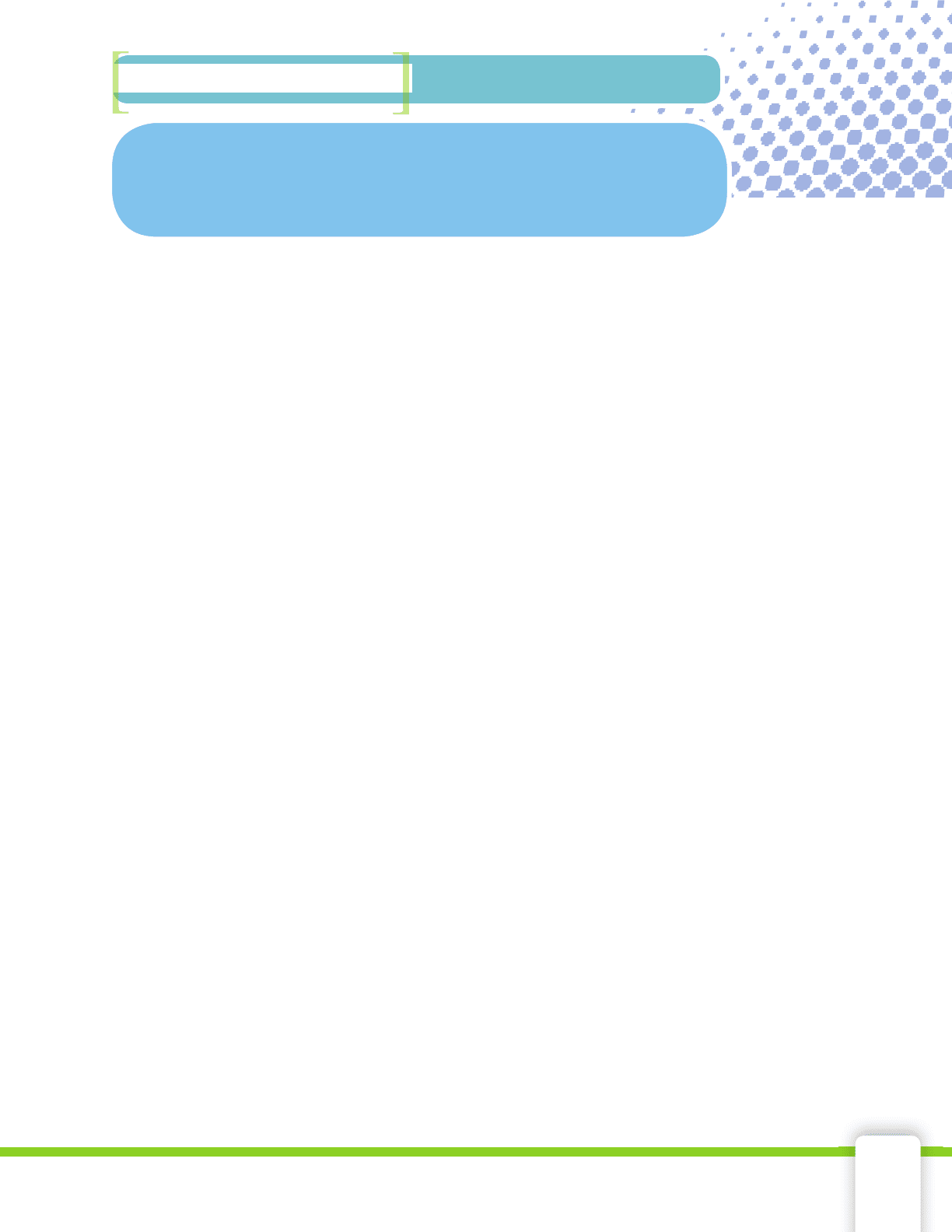
3-3 Savings Accounts 135
1. How might those words apply to what has been outlined in this lesson?
What “play on words” do you notice in Greenspan’s quote?
2. Arrange the following interest rates in ascending order: 3.4%,
3.039%, 3
3
___
16
%, 3.499%, 3
1
__
2
%.
3. Josh has a savings account at a bank that charges a $10 fee for every
month his balance falls below $1,000. His account has a balance of
$1,203.44 and he withdraws $300. What will his balance be in
six months if he makes no deposits or withdrawals?
4. Linda’s savings account has fallen below the $1,000 minimum
balance required to receive interest. It is currently $871.43. The
monthly fee charged by the bank for falling below the minimum
is x dollars. Express algebraically how you compute the number of
months it will take Linda’s account to reach a zero balance if she
makes no deposits. Explain. If x = 9, how many months will it take?
5. John, Paul, and George are having a disagreement over interest rates.
John says that 6
3
__
4
% can be expressed as 6.75%. George thinks that 6
3
__
4
%
can be expressed as 0.0675. Paul remembers converting percents to
equivalent decimals and thinks it can be expressed as 0.0675%. Who
is correct, and who is incorrect? Explain.
6. Beth and Mark would like to put some savings in the bank. They most
likely will not need this money for 4 years, so Beth wants to put it in
a four-year CD. Mark wants to put the money in a passbook savings
account. What is the advantage of a CD? What is the disadvantage?
7. Find the simple interest on a $2,350 principal deposited for six years
at a rate of 4.77%.
8. Ryan deposits $775 in an account that pays 4.24% simple interest for
four years. Brian deposits $775 in an account that pays 4.24% simple
interest for one year.
a. What is Ryan’s interest after the four years?
b. What is Ryan’s balance after four years?
c. How much interest did Ryan’s account earn the fi rst year?
d. How much interest did Ryan’s account earn the fourth year?
e. What is Brian’s interest after the fi rst year?
f. What is Brian’s balance after the fi rst year?
g. Suppose Brian withdraws all of the principal and interest after the fi rst
year and deposits it into another one-year account at the same rate,
what is his interest for the second year? Round to the nearest cent.
h. Compare the interest Brian earns with the interest Ryan earns for
the second year. Who earned more interest? Explain.
Anything that we can do to raise personal savings is very much in
the interest of this country.
Alan Greenspan, Economist
Applications
49657_03_ch03_p114-171.indd 13549657_03_ch03_p114-171.indd 135 12/23/09 6:25:57 PM12/23/09 6:25:57 PM
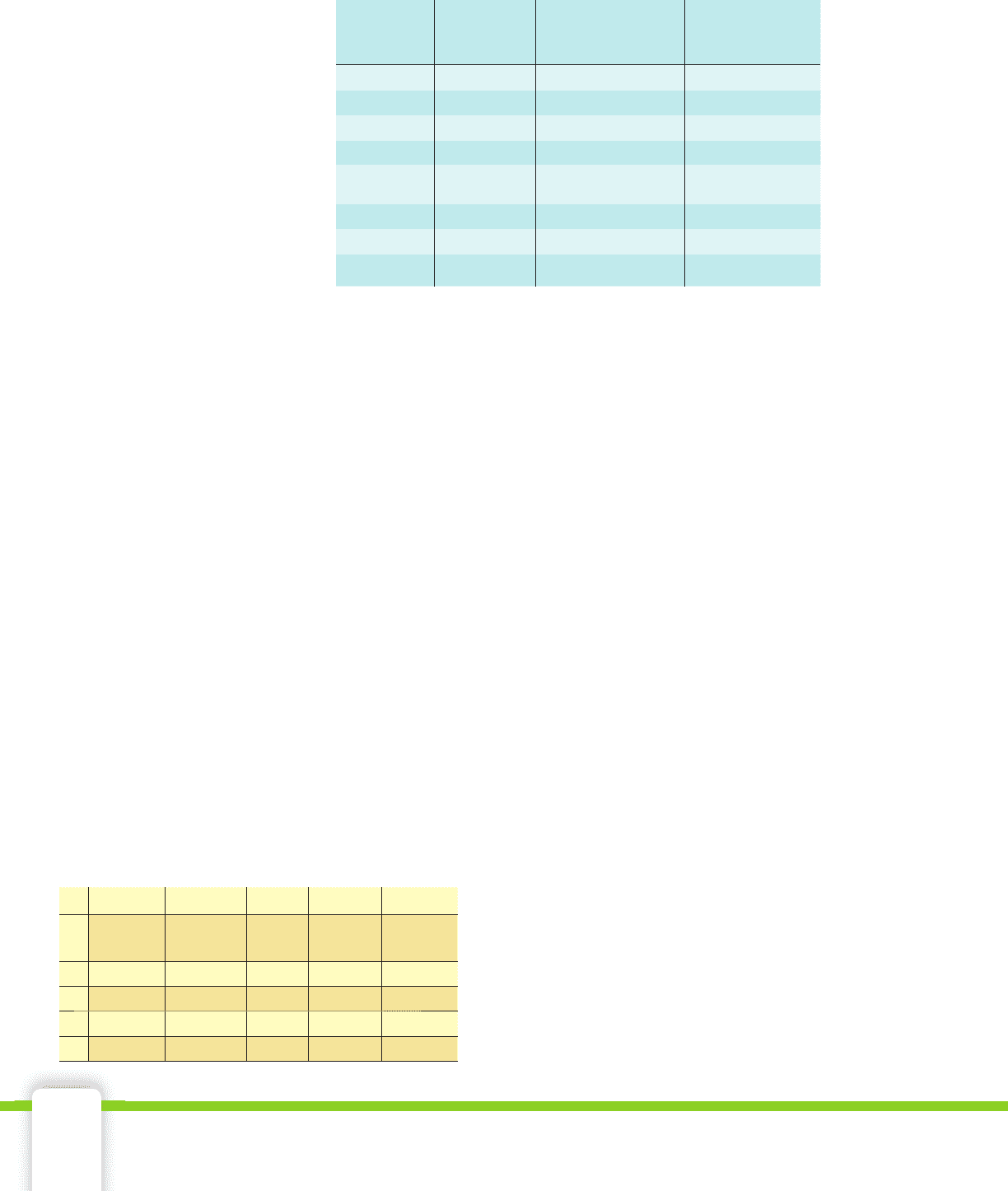
136 Chapter 3 Banking Services
Interest Principal
Rate (to the
nearest hundredth
of a percent) Time
a. $2,000 3.35% 4 years
b. $3,500 4.1% 15 months
c. $20,100 5.5% 400 days
$100 $700 8.8% d.
$250 $3,000
4
3
__
4
%
e.
$500 $3,000 f. 3 years
$500 g. 4.4% 30 months
xp 3% h.
ABCDE
1 Interest Principal Rate
Time in
Years
Time in
Months
2
3
4
5
9. Use the simple interest formula to fi nd the missing entries in the
table. Round monetary amounts to the nearest cent.
10. How much simple interest does $2,560 earn in 17 months at a
rate of 5
1
__
8
%? Round to the nearest cent.
11. How long does it take $450 to double at a simple interest rate of 14%?
12. How long does it take $450 to double at a simple interest rate of
100%?
13. What interest rate is needed for $9,500 to earn $900 in
19 months? Round to the nearest hundredth of a percent.
14. Assume $20,000 is deposited into a savings account. Bedford Bank
offers an annual rate of 4% simple interest for fi ve years. Slick Bank offers
a rate of 20% simple interest for one year. Which earns more interest?
15. Assume $x is deposited into a savings account. Blank Bank offers
an annual rate of r % for y years. Thank Bank offers a rate of ry % for
one year. Which earns more interest?
16. A couple is planning a savings account for a newborn baby. They
start with $3,450 received in newborn baby gifts. If no deposits or
withdrawals are made, what is the balance of the account if it earns
simple interest at 5% interest for 18 years?
17. Ron estimates that it will cost $400,000 to send his daughter to a
private college in 18 years. He currently has $90,000 to deposit in an
account. What simple interest rate must his account have to reach a
balance of $400,000 in 18 years? Round to the nearest percent.
18. Zoe creates a spreadsheet to make simple interest calculations.
The user inputs values for the principal, rate, and time in years in
row 2. Write each formula.
a. For A2 to compute the interest.
b. For B2 to compute the principal.
c. For C2 to compute the interest rate.
d. For D2 to compute time in years, given the
interest, rate, and the principal.
e. For E2 to compute the time in months, given
the time in years.
49657_03_ch03_p114-171.indd 13649657_03_ch03_p114-171.indd 136 12/23/09 6:25:57 PM12/23/09 6:25:57 PM

3-4 Explore Compound Interest 137
What is compound interest?
When opening up any bank account, the annual interest rate is of major
concern to most consumers. However, it is not enough to just know the
interest rate. How the interest is computed should also be known.
Principal is used to compute interest. For simple interest, only the
original principal is used to compute annual interest. Principal increases
each time interest is added to the account. Sometimes, interest is com-
puted using the new principal. That is, the account earns interest on the
interest.
Compound interest is money earned on the money deposited
plus previous interest. This is not the case for simple
interest. For simple interest, only the original principal
is used to compute annual interest.
Interest can be compounded in different ways.
Annual compounding• is interest compounded
once each year.
Semiannual compounding• is interest com-
pounded twice per year, or every six months.
Quarterly compounding• is interest com-
pounded four times per year, or every three months.
Daily compounding• is interest compounded
every day. There are 365 days in a year and 366 days
in a leap year.
The most common form of compounding is daily
compounding. The bank pays interest every single day,
based on that day’s principal. The bank, however, does
not add the interest every day. They keep a record of inter-
est earned and add it into the account monthly or quar-
terly. This is called
crediting an account. Compounding
daily and crediting monthly is the most common proce-
dure used by banks today.
quarterly •
compounding
daily compounding•
crediting•
Key Terms
compound interest•
annual compounding•
semiannual •
compounding
Objectives
Understand •
the concept of
getting interest
on your interest.
Compute
•
compound
interest using a
table.
Explore Compound Interest
3-4
© SVEMIR, 2009/USED UNDER LICENSE FROM SHUTTERSTOCK.COM
-
© SVEMIR, 20
09/USED UNDER LICENSE FROM SHUTTERSTOCK.COM
In the old days a man who saved money was a miser;
nowadays he's wonder.
Author Unknown
49657_03_ch03_p114-171.indd 13749657_03_ch03_p114-171.indd 137 12/23/09 6:25:58 PM12/23/09 6:25:58 PM
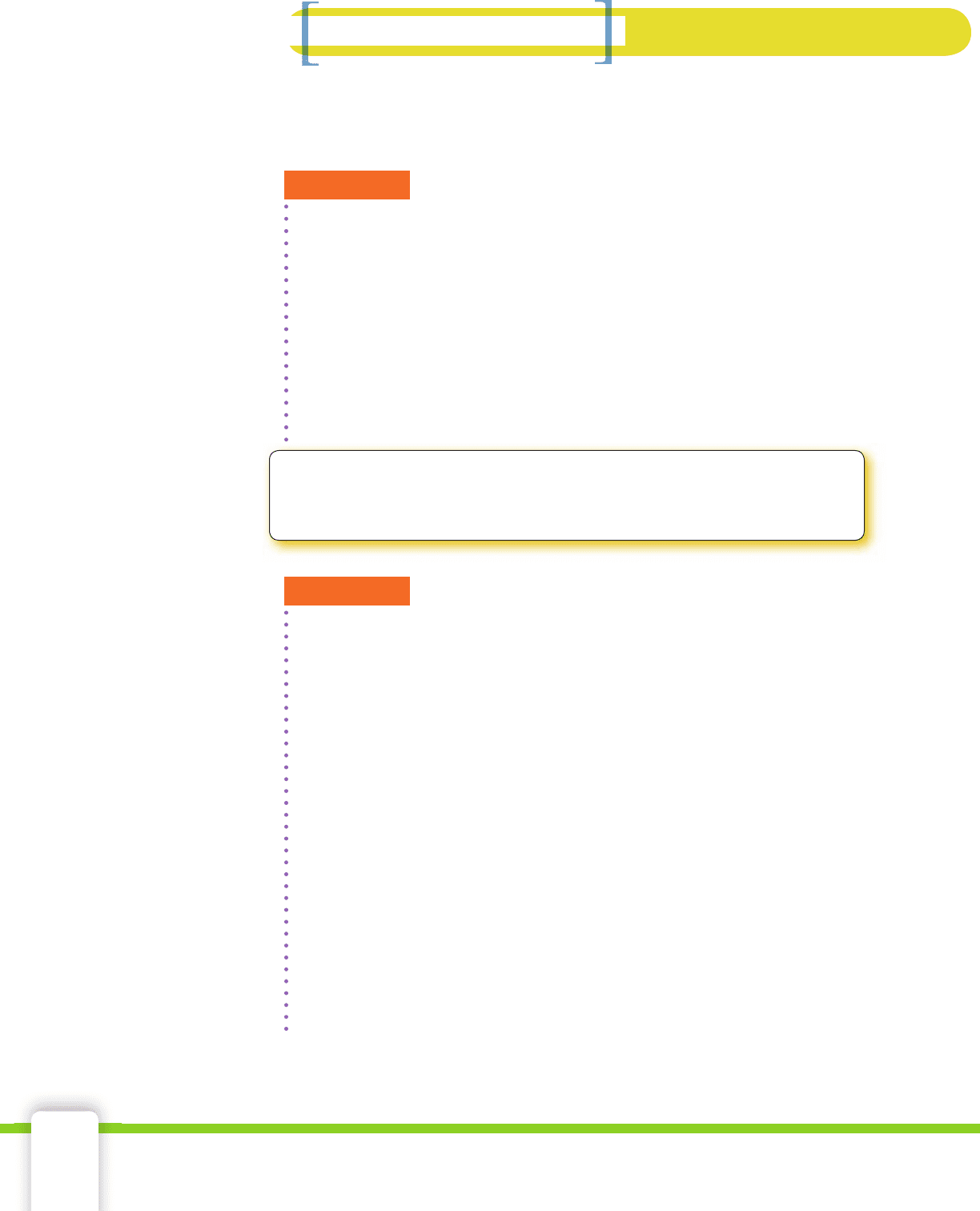
138 Chapter 3 Banking Services
Skills and Strategies
Here you will get an understanding of how compound interest works.
This will help you see how interest accumulates. As you read the exam-
ples, compare the results from each to the examples before it.
EXAMPLE 1
How much interest would $1,000 earn in one year at a rate of 6%,
compounded annually? What would be the new balance?
SOLUTION The fi rst year of interest compounded annually can be
found using the simple interest formula.
Convert 6% to a decimal. r = 6% = 0.06
Use the simple interest formula. I = prt
Substitute. I = 1,000 × 0.06 × 1 = 60
The account would earn $60 interest, and the balance after one year is
$1,060.
CHECK
■
YOUR UNDERSTANDING
How much would x dollars earn in one year at a rate of 4.4%
compounded annually?
EXAMPLE 2
Maria deposits $1,000 in a savings account that pays 6% interest, com-
pounded semiannually. What is her balance after one year?
SOLUTION Accounts that pay interest semiannually have the interest
added on twice each year (every six months).
Convert 6% to a decimal. r = 6% = 0.06
Convert 6 months to years. t = 6 months = 0.5 years
Use the simple interest formula. I = prt
Substitute and simplify. I = 1,000 × 0.06 × 0.5 = 30
Add the interest to the principal. 1,000 + 30 = 1,030
This new principal, $1,030, is used to compute the next six months’
interest.
Use the simple interest formula. I = prt
Substitute and simplify. I = 1,030 × 0.06 × 0.5 = 30.90
Add the interest to the principal. 1,030 + 30.90 = 1,060.90
Maria’s balance is $1,060.90 after one year. Compare this to the
balance from Example 1.
49657_03_ch03_p114-171.indd 13849657_03_ch03_p114-171.indd 138 12/23/09 6:26:03 PM12/23/09 6:26:03 PM
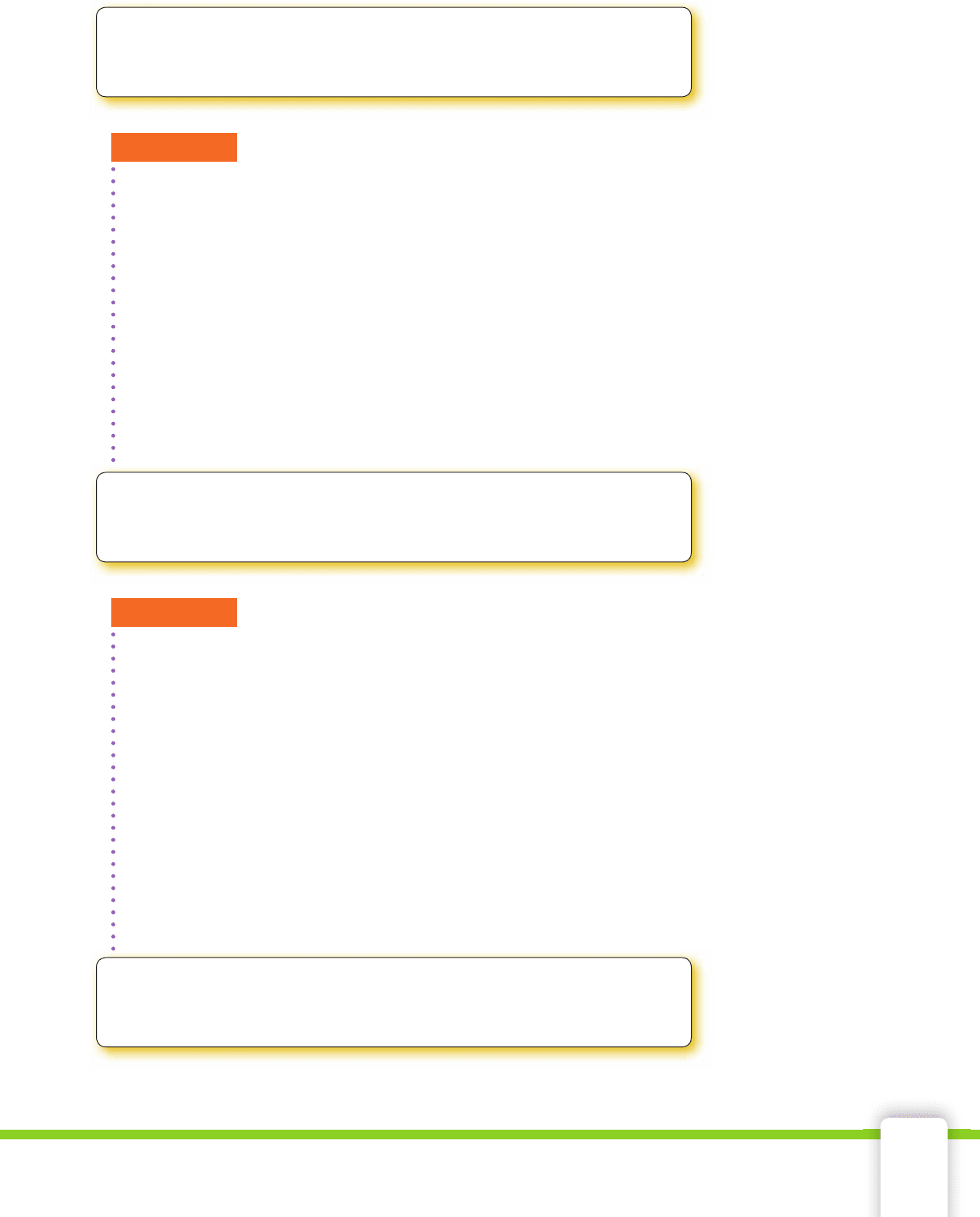
3-4 Explore Compound Interest 139
CHECK
■
YOUR UNDERSTANDING
Alex deposits $4,000 in a savings account that pays 5% interest,
compounded semiannually. What is his balance after one year?
EXAMPLE 3
How much interest does $1,000 earn in three months at an interest rate
of 6%, compounded quarterly? What is the balance after three months?
SOLUTION Accounts that pay interest quarterly earn interest every
three months.
Convert 6% to a decimal. r = 6% = 0.06
Convert 1 quarter to years. t = 1 quarter = 3 months = 0.25 years
Use the simple interest formula. I = prt
Substitute and simplify. I = 1,000 × 0.06 × 0.25 = 15
Add the interest to the principal. 1,000 + 15 = 1,015
The fi rst quarter earns $15 interest, so the principal after one quarter is
$1,015.
CHECK
■
YOUR UNDERSTANDING
How much does $3,000 earn in six months at an interest rate of 4%,
compounded quarterly?
EXAMPLE 4
How much interest does $1,000 earn in one day at an interest rate of
6%, compounded daily? What is the balance after a day?
SOLUTION Accounts that pay interest daily earn interest every day.
There are 365 days in a year.
Convert 6% to a decimal. r = 6% = 0.06
Convert 1 day to years. t = 1 day =
1
____
365
years
Use the simple interest formula. I = prt
Substitute. I = 1,000 × 0.06 ×
1
____
365
≈ 0.16
Add the interest to the principal. 1,000 + 0.16 = 1,000.16
The fi rst day’s interest is approximately 16 cents, so the new balance
is $1,000.16. This larger principal is used to compute the next day’s
interest.
CHECK
■
YOUR UNDERSTANDING
How much interest does x dollars earn in one day at an interest rate
of 5%, compounded daily? Express the answer algebraically.
49657_03_ch03_p114-171.indd 13949657_03_ch03_p114-171.indd 139 12/23/09 6:26:03 PM12/23/09 6:26:03 PM
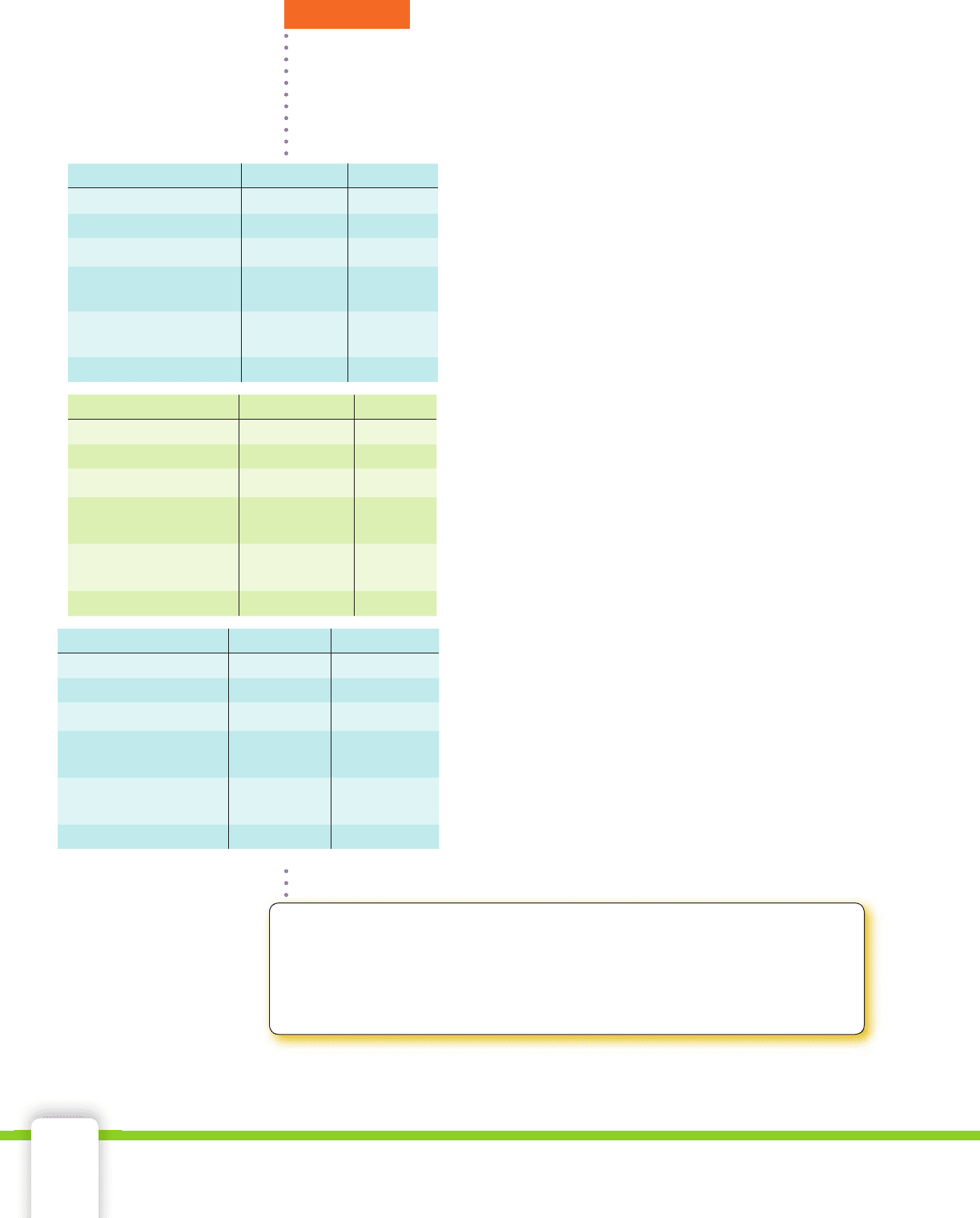
140 Chapter 3 Banking Services
Date July 11 July 12
Opening balance $1,234.98
Deposit (+) $34.00 $345.77
Withdrawal (−)
$200.00
Principal used to
compute interest
Day’s interest rounded
to the nearest cent
Ending balance
Date July 11 July 12
Opening Balance $1,234.98
Deposit (+) $34.00 $345.77
Withdrawal (−)
$200.00
Principal used to
compute interest
$1,068.98
Day’s interest rounded
to the nearest cent
$0.09
Ending balance $1,069.07
Date July 11 July 12
Opening Balance $1,234.98 $1,069.07
Deposit (+) $34.00 $345.77
Withdrawal (−)
$200.00 —
Principal used to
compute interest
$1,068.98 $1,414.84
Day’s interest rounded
to the nearest cent
$0.09 $0.12
Ending balance $1,069.07 $1,414.96
EXAMPLE 5
Jennifer has a bank account that compounds interest daily at a rate of
3.2%. On July 11, the principal is $1,234.98. She withdraws $200 for
a car repair. She receives a $34 check from her health insurance com-
pany and deposits it. On July 12, she deposits her $345.77 paycheck.
What is her balance at the end of the day on July 12?
SOLUTION Organize the information in a table
like the three-column table that is shown.
For July 11, the principal used to compute
interest is computed by adding the $34 deposit
and subtracting the $200 withdrawal.
The day’s interest is the daily compounded
interest.
To fi nd the ending balance, add the July 11
interest to the principal used to compute interest
to the nearest cent.
The opening balance for July 12 is the same as
the ending balance from July 11.
The July 12 deposit must be added to the
opening balance before the interest for July 12
is computed.
Compute interest to the nearest cent.
Add the interest to the principal used to
compute interest, to compute the ending
balance.
Jennifer’s balance is $1,414.96 at the end of the
day on July 12.
CHECK
■
YOUR UNDERSTANDING
On January 7, Joelle opened a savings account with $900. It earned
3% interest, compounded daily. On January 8, she deposited her fi rst
paycheck of $76.22. What was her balance at the end of the day on
January 8?
49657_03_ch03_p114-171.indd 14049657_03_ch03_p114-171.indd 140 12/23/09 6:26:03 PM12/23/09 6:26:03 PM
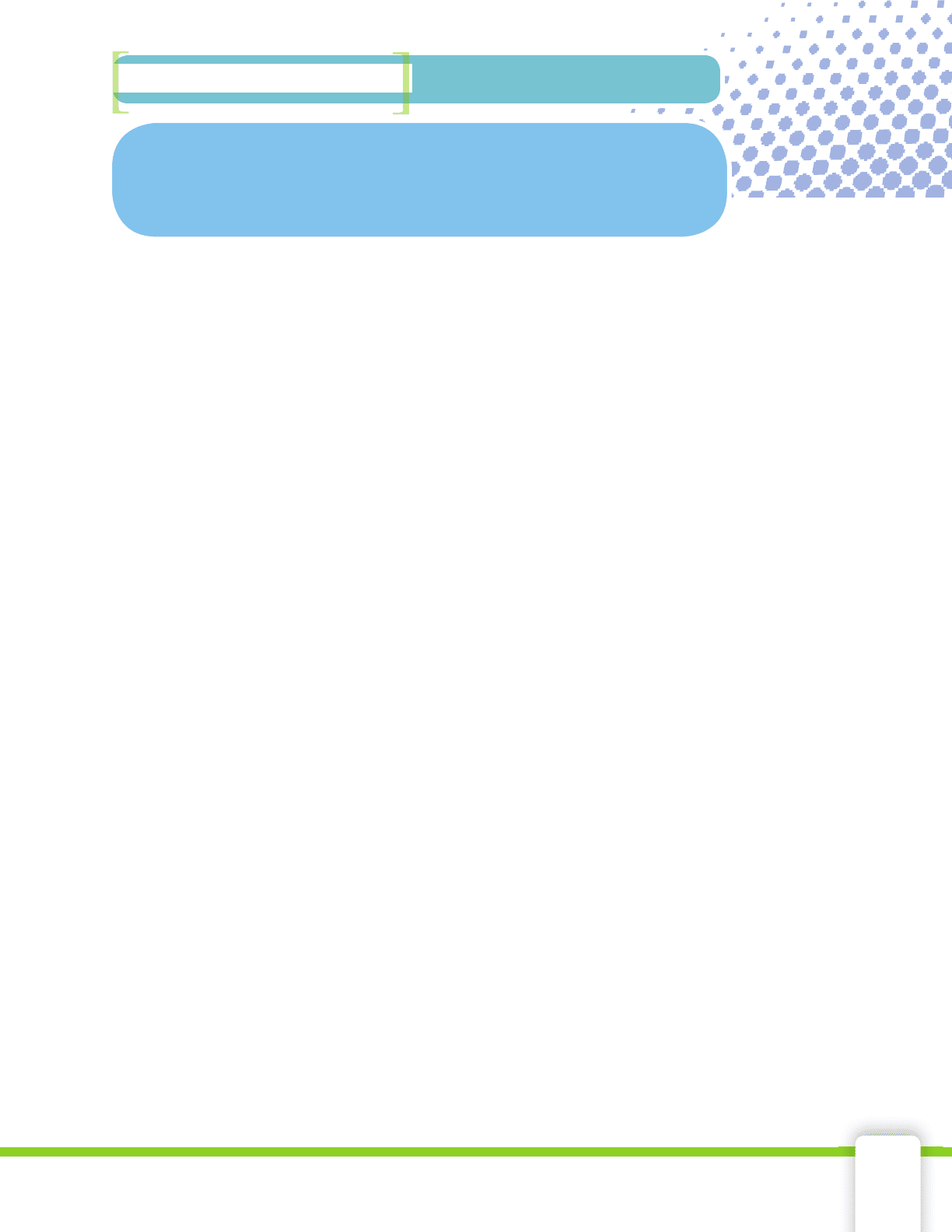
3-4 Explore Compound Interest 141
In the old days a man who saved money was a miser; nowadays
he's wonder.
Author Unknown
Applications
1. How might those words apply to what you learned in this lesson?
2. Jerome deposits $3,700 in a certifi cate of deposit that pays 6
1
__
2
%
interest, compounded annually. How much interest does Jerome
earn in one year?
3. Sally deposits $4,000 in a certifi cate of deposit that pays 6
3
__
4
% simple
interest. What is her balance after one year?
4. Pierre deposits $9,000 in a certifi cate of deposit that pays 8% inter-
est, compounded semiannually. How much interest does the account
earn in the fi rst six months? What is the balance after six months?
5. Kevin has x dollars in an account that pays 2.2% interest, com-
pounded quarterly. Express his balance after one quarter algebraically.
6. Regina deposits $3,500 in a savings account that pays 7
1
__
2
% interest,
compounded semiannually.
a. How much interest does the account earn in the fi rst six months?
b. What is the balance at the end of the fi rst six months?
c. How much interest does the account earn in the second six months?
d. What is the balance at the end of the year?
e. How much interest does the account earn the fi rst year?
f. How much interest would $3,500 earn in one year at 7
1
__
2
%
interest, compounded annually?
g. How much more interest does Regina earn at an interest rate of
7
1
__
2
% compounded semiannually than compounded annually?
7. Liam deposits $3,500 in a saving account that pays 7
1
__
2
% interest,
compounded quarterly.
a. Find the fi rst quarter’s interest.
b. Find the fi rst quarter’s ending balance.
c. Find the second quarter’s interest.
d. Find the second quarter’s ending balance.
e. Find the third quarter’s interest.
f. Find the third quarter’s ending balance.
g. Find the fourth quarter’s interest.
h. What is the balance at the end of one year?
i. How much interest does the account earn in the fi rst year?
8. Janine opens a savings account with a deposit of $720. The account
pays 3.4% interest, compounded daily. What is the fi rst day’s interest?
Round to the nearest cent.
9. Laura deposits $2,000 in an account that has an annual interest rate
of 3.96%, compounded monthly. How much interest will she earn at
the end of 1 month?
49657_03_ch03_p114-171.indd 14149657_03_ch03_p114-171.indd 141 12/23/09 6:26:04 PM12/23/09 6:26:04 PM
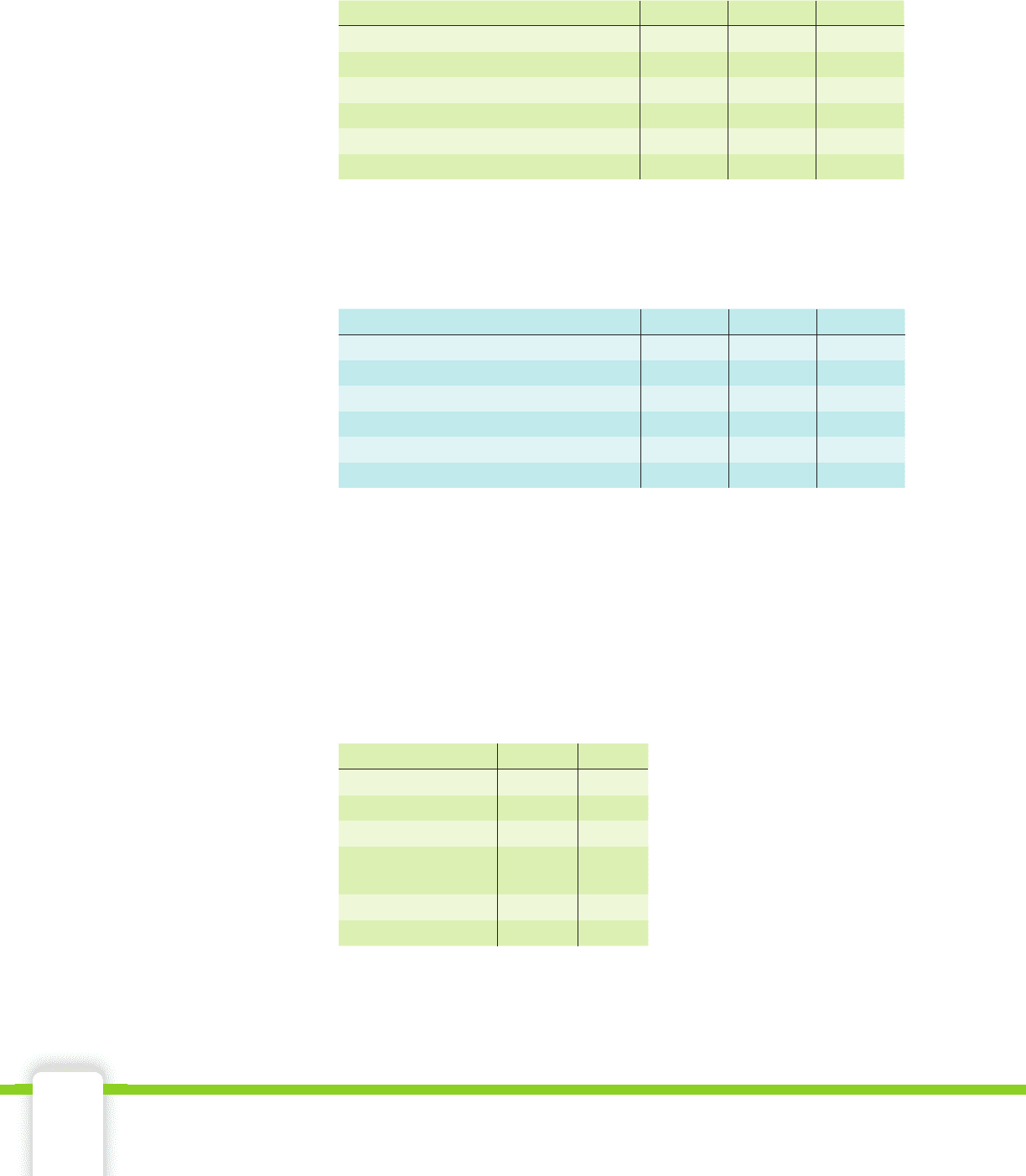
142 Chapter 3 Banking Services
10. Jacob opens a savings account in a non-leap year on August 10 with
a $4,550 deposit. The account pays 4% interest, compounded daily.
On August 11 he deposits $300, and on August 12 he withdraws
$900. Find the missing amounts in the table.
11. On December 18 of a leap year, Stacy opened a savings account by
depositing $6,000. The account pays 3.45% interest, compounded
daily. On December 19 she deposited $500, and on December 20 she
withdrew $2,500. Find the missing amounts in the table. Round to
the nearest cent. What is her opening balance on December 21?
12. On May 29, Rocky had an opening balance of x dollars in an account
that pays 3% interest, compounded daily. He deposits y dollars.
Express his ending balance on May 30 algebraically.
13. Linda has d dollars in an account that pays 3.4% interest, com-
pounded weekly. She withdraws w dollars. Express her fi rst week’s
interest algebraically.
14. The table represents the compound interest calculations for an
account that pays 2% interest compounded daily. Represent a–g
algebraically.
15. One day before the end of the month, George had an opening
balance of m dollars in an account that pays 2.25% interest com-
pounded monthly. On the last day of the month, he made a deposit
equal to twice his opening balance. Express his ending balance on
the last day of the month algebraically.
Date Aug. 10 Aug. 11 Aug. 12
Opening balance a. f. k.
Deposit b. g. -----
Withdrawal ----- ----- l.
Principal used to compute interest c. h. m.
Day’s interest rounded to nearest cent d. i. n.
Ending balance e. j. p.
Date Dec. 18 Dec. 19 Dec. 20
Opening balance a. g. m.
Deposit b. h. n.
Withdrawal c. i. p.
Principal used to compute interest d. j. q.
Day’s interest rounded to nearest cent e. k. r.
Ending balance f. l. s.
Date Feb. 2 Feb. 3
Opening balance P d.
Deposit D ------
Withdrawal ----- W
Principal used to
compute interest
a. e.
Interest b. f.
Ending balance c. g.
49657_03_ch03_p114-171.indd 14249657_03_ch03_p114-171.indd 142 12/23/09 6:26:05 PM12/23/09 6:26:05 PM

3-5 Compound Interest Formula 143
What are the advantages of using
the compound interest formula?
Julio deposited $10,000 in a fi ve-year CD, with the intention of using the
money for his son’s college education. The account pays 5.2% interest
compounded daily. There will be no deposits or withdrawals during the
fi ve years. Julio wants to know how much the $10,000 will grow to by
the end of the fi ve years. Imagine if he set up a daily compound interest
table as in the last lesson. There are over 1,800 days in fi ve years, so the
table would get quite tedious. It is not practical to solve this problem one
day at a time.
Calculating compound interest using the simple
interest formula is tedious when there are numer-
ous periods. The power of mathematics can turn this
long procedure into a relatively small amount of work.
Numerical examples and algebra can be combined to
uncover a pattern that leads to a formula that fi nds
compound interest. The
compound interest formula
relates principal, interest rate, the number of times inter-
est is compounded per year, and the number of years the
money will be on deposit, and the ending balance. The
formula is used for any type of compounding: annually,
semiannually, monthly, weekly, daily, and so on.
In Lesson 3-3, you used the annual interest rate
to compute interest. Banks call this the
annual
percentage rate (APR)
. Most banks advertise the
annual percentage yield (APY) since it is higher than
the APR for accounts compounded more than once per
year. The bank takes the dollar amount of interest you
earn under the compounding to create the APY. The APY is
the simple interest rate that would be required to give the
same dollar amount of interest that the compounding gave.
Therefore, annual percentage yield (APY) is an annual rate of
interest that takes into account the effect of compounding.
annual percentage •
yield (APY)
Key Terms
compound interest •
formula
annual percentage •
rate (APR)
Objectives
Become •
familiar with the
derivation of
the compound
interest formula.
Make
•
computations
using the
compound
interest formula.
Compound Interest Formula
3-5
© GOLDEN PIXELS LLC, 2009/USED UNDER LICENSE FROM SHUTTERSTOCK.COM
© GO
LDEN
PIXELS
LLC, 200
9/USED UNDER
LICENSE FROM SH
UTTERSTOCK.COM
To make a million, start with $900,000.
Morton Shulman, Politician, Businessman, and Television Personality
49657_03_ch03_p114-171.indd 14349657_03_ch03_p114-171.indd 143 12/23/09 6:26:05 PM12/23/09 6:26:05 PM
